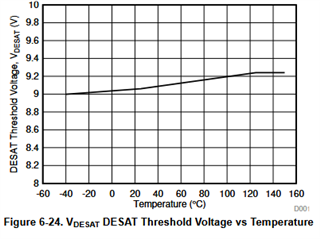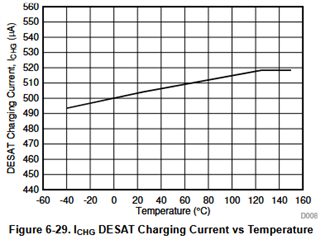I'm in the process of designing a gate driver, and I have a quick question.

1- Should we use typical values for "detection threshold" and "capacitor charge current" from the technical document?
Please correct me if I'm wrong, but I believe the variability in these values is due to temperature. However, when planning for normal operation at 50 degrees junction temperature, for example, which values should I consider?
My concern stems from the potential discrepancies in calculation results. For instance, there can be a difference of 0.7 μS between the minimum and maximum "capacitor charge current" values. Or, as another example, there's a 1-volt difference between the minimum and maximum "detection threshold" values, which translates to a difference of 100A-150A for the 2MBI150VA-120-50 IGBT I'm using.
Could you help clarify my confusion on this matter?
Best regards,





